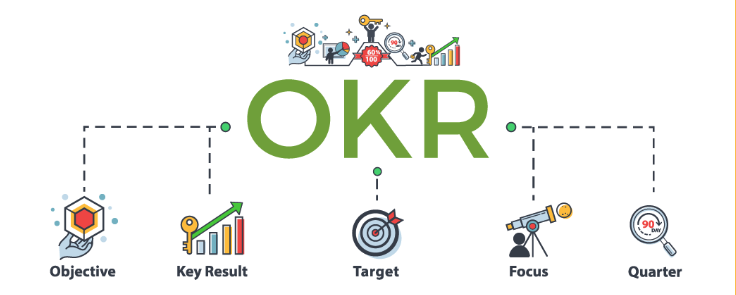OKR – A Scientific Approach to Goal-Setting and Performance Management
Objective and Key Results (OKR) is a goal-setting and performance management framework that has become increasingly popular in organizations striving for agility, innovation, and growth. Initially pioneered by Intel, OKR is now utilized by major companies such as Google, LinkedIn, and Spotify. This article will delve into the scientific aspects of OKR, exploring how it facilitates employee alignment, engagement, and productivity.
- The Science Behind Goal-Setting
Goal-setting is a well-researched area within the fields of psychology and management. The seminal work of Locke and Latham (1990) introduced the Goal-Setting Theory, which posits that setting specific and challenging goals leads to better performance. According to the theory, the key mechanisms underlying this relationship are goal-directed effort, persistence, and the development of effective strategies. Research has consistently demonstrated the positive impact of goal-setting on employee performance and motivation (Locke & Latham, 2002).
- OKR: A Scientific Framework for Goal-Setting
OKR builds upon the principles of Goal-Setting Theory, ensuring that objectives are specific, measurable, achievable, relevant, and time-bound (SMART). Key results are quantitative metrics that track progress towards objectives, increasing accountability and enabling performance evaluation. The OKR framework also emphasizes the importance of aligning individual and team goals with organizational objectives, fostering a shared vision and enhancing collaboration (Doerr, 2018).
- Boosting Employee Engagement with OKR
Employee engagement has been linked to a multitude of positive outcomes, including higher productivity, improved well-being, and lower turnover rates (Harter et al., 2002). OKR can enhance employee engagement by providing a clear sense of purpose and direction, enabling employees to understand how their efforts contribute to the organization’s success. Moreover, the transparency and visibility of OKRs encourage open communication and foster a sense of ownership among employees (Doerr, 2018).
- OKR and Continuous Feedback
The OKR framework promotes a culture of continuous feedback, moving away from traditional annual performance reviews. Frequent check-ins and progress updates allow for timely recognition, support, and constructive feedback, contributing to a growth mindset and improved performance (Murphy & Cleveland, 1995). Research has shown that real-time feedback can enhance motivation, satisfaction, and goal attainment (Ashford et al., 2003).
- OKR and Psychological Safety
By emphasizing learning and growth over perfection, OKR can foster a psychologically safe environment that encourages experimentation and innovation. Psychological safety, defined as a shared belief that it is safe to take interpersonal risks (Edmondson, 1999), has been associated with higher team performance and employee satisfaction. Integrating psychological safety into the OKR framework can further enhance its effectiveness (Newman et al., 2017).

Conclusion:
The OKR framework is a scientific approach to goal-setting and performance management that has the potential to transform organizational cultures, drive growth, and elevate employee engagement. By combining the principles of Goal-Setting Theory with an emphasis on alignment, transparency, continuous feedback, and psychological safety, OKR provides a robust and agile framework for success in today’s dynamic business landscape.
References:
Ashford, S. J., Blatt, R., & VandeWalle, D. (2003). Reflections on the looking glass: A review of research on feedback-seeking behavior in organizations. Journal of Management, 29(6), 773-799.
Doerr, J. (2018). Measure what matters: How Google, Bono, and the Gates Foundation rock the world with OKRs. Portfolio/Penguin.
Edmondson, A. (1999). Psychological safety and learning behavior in work teams. Administrative Science Quarterly, 44(2), 350-383.
Harter, J. K., Schmidt, F. L., & Hayes, T. L. (2002). Business-unit-level relationship between employee satisfaction, employee engagement, and business outcomes: A meta-analysis. Journal of Applied Psychology, 87(2), 268-279.
Locke, E. A., & Latham, G. P. (1990). A theory of goal setting & task performance. Prentice-Hall, Inc.
Locke, E. A., & Latham, G. P. (2002). Building a practically useful theory of goal setting and task motivation: A 35-year odyssey. American Psychologist, 57(9), 705-717.
Murphy, K. R., & Cleveland, J. N. (1995). Understanding performance appraisal: Social, organizational, and goal-based perspectives. Sage Publications.
Newman, A., Donohue, R., & Eva, N. (2017). Psychological safety: A systematic review of the literature. Human Resource Management Review, 27(3), 521-535.








